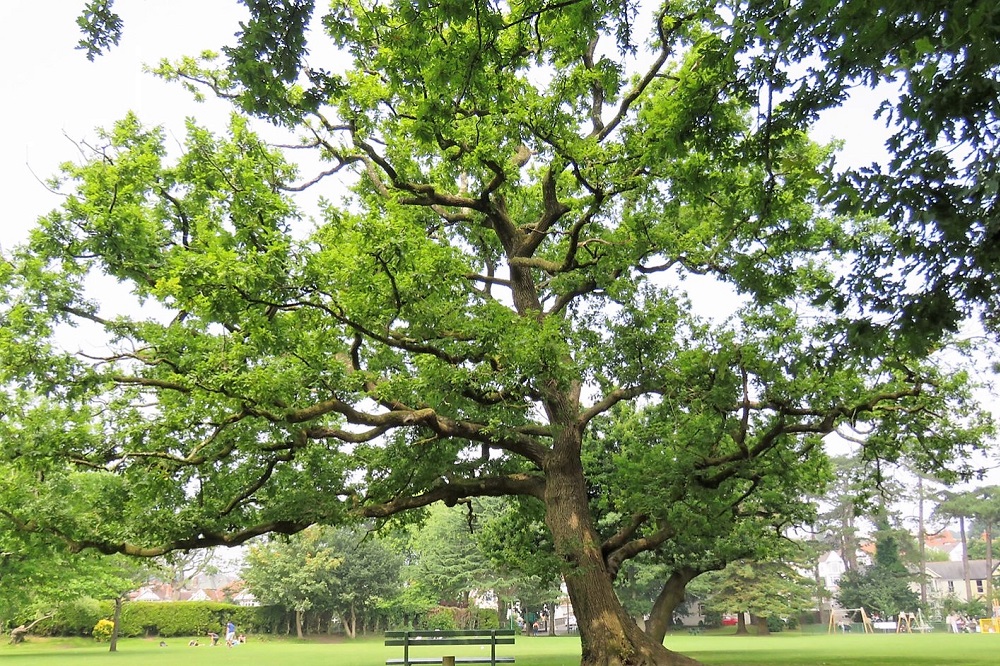Hot, dry summers could increase subsidence risk for homeowners

Richard Youle, local democracy reporter
Home subsidence claims could become considerably more common if warmer and drier summers continue, a solicitor said.
Sarah Dodd specialises in cases involving tree-related subsidence. This is when trees whose roots extend below a house cause it to move downwards in dry summers as the roots extract moisture from the surrounding soil, causing it to shrink.
Increased rainfall in the winter can reverse the process and push the property upwards, partly because the tree roots take up less water as the tree isn’t in full leaf.
Ms Dodd, of Rhoose, near Cardiff, said tree-related subsidence has tended to be a London issue because of its dry climate and the prevalence of plane trees. She said London plane trees absorbed a lot of water.
Subsidence claims increased in the wake of the hot summer of 2018 and Ms Dodd said she expected a repeat this year and into the future. According to climate science projections, the UK is likely to experience more warm, dry summers.
“What we are seeing now with climate change and hot dry weather is that these claims are moving out to other parts of the UK,” she said.
“Home-owners in London should know about the risk of trees causing subsidence, but in Newport they would not. They are very stressful insurance claims.”
Liability
Ms Dodd, director of Tree Law, said subsidence affected properties on clay or other shrinkable soils. Lime and oak, as well as plane, were among “higher water demand” trees, she said.
The 45-year-old environmental law graduate said there wasn’t a rule of thumb about how close a tree needed to be to a house to cause a subsidence effect.
Generally-speaking, she said, the diameter of a tree’s roots could match the tree’s height. Ms Dodd said she was currently advising a council in South Wales on tree subsidence liability matters.
On subsidence more generally, Ms Dodd said insurers were finding it to difficult to model risk because conditions were becoming unlike those in the past. “We’re just going into new territory,” she said.
Subsidence manifests itself in cracking, mainly by windows, doors, or where extensions and conservatories join the property.
Ms Dodd said subsidence has affected homes in South Wales previously and added: “I think it is going to become a lot more common.”
Don’t panic
The Association of British Insurers (ABI), a trade body, said subsidence claims quadrupled in the UK following the hot summer of 2018. Subsidence cracks, it said, usually appeared suddenly and tended to be thicker than 3mm – the depth of a 10p coin.
The ABI said subsidence was routinely covered by buildings insurance. The excess though is normally £1,000 or more.
An ABI spokesman said householders should get in touch with their insurers if they thought their home was experience subsidence.
“Insurers understand that the threat of subsidence can be very stressful for home-owners,” he said.
“Our advice is don’t panic if you spot a crack in your home – there are many other reasons why these may have occurred. Get in touch with your insurer if you believe your home is experiencing subsidence and they’ll be on hand with the best expertise and the best technology. Insurers and their loss adjusters are very well equipped to deal with these types of complex claim.”
Support our Nation today
For the price of a cup of coffee a month you can help us create an independent, not-for-profit, national news service for the people of Wales, by the people of Wales.





More so those on clayey ground which expands and contracts with moisture content whose settlement is measured in years. On sandy ground, which is well drained, settlement is instantaneous and is unaffected adversely by dry condition but might struggle with high saturation when it becomes like a non-Newtonian liquid